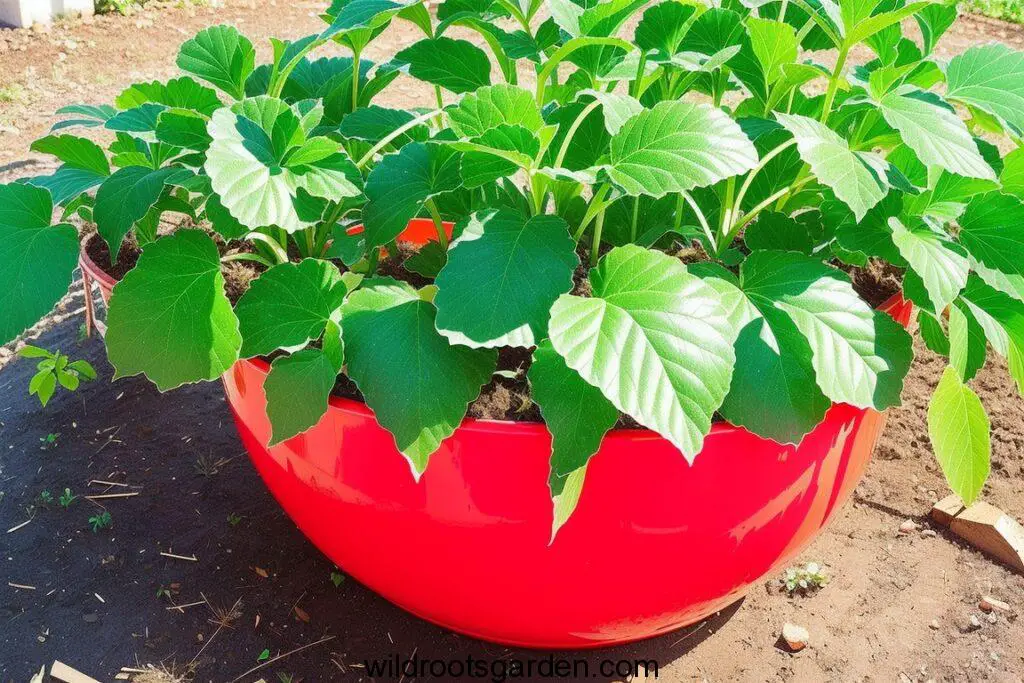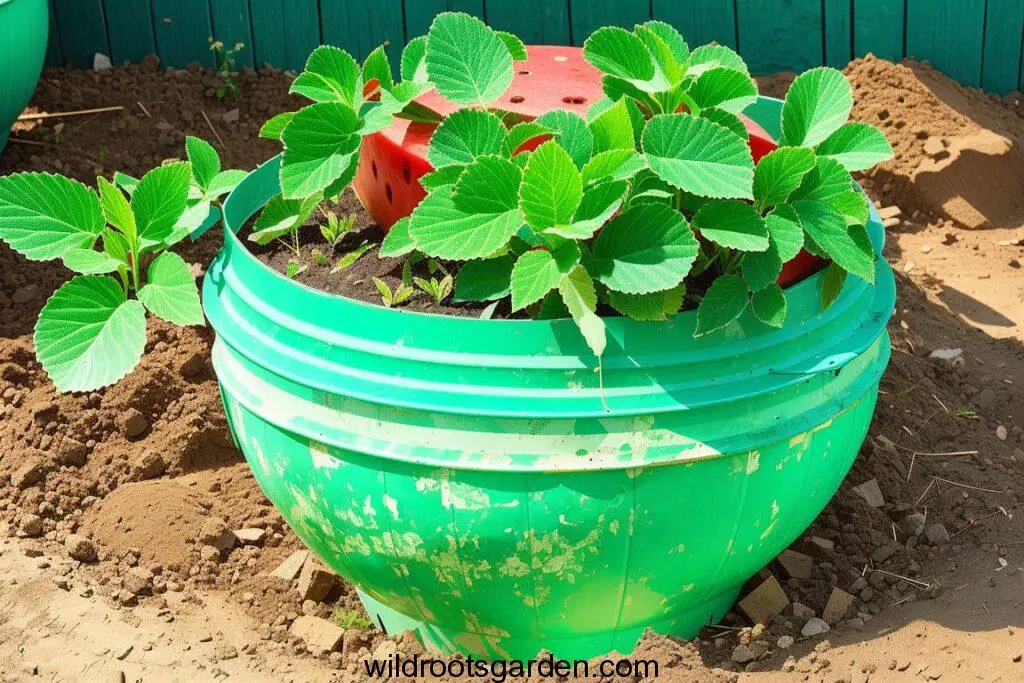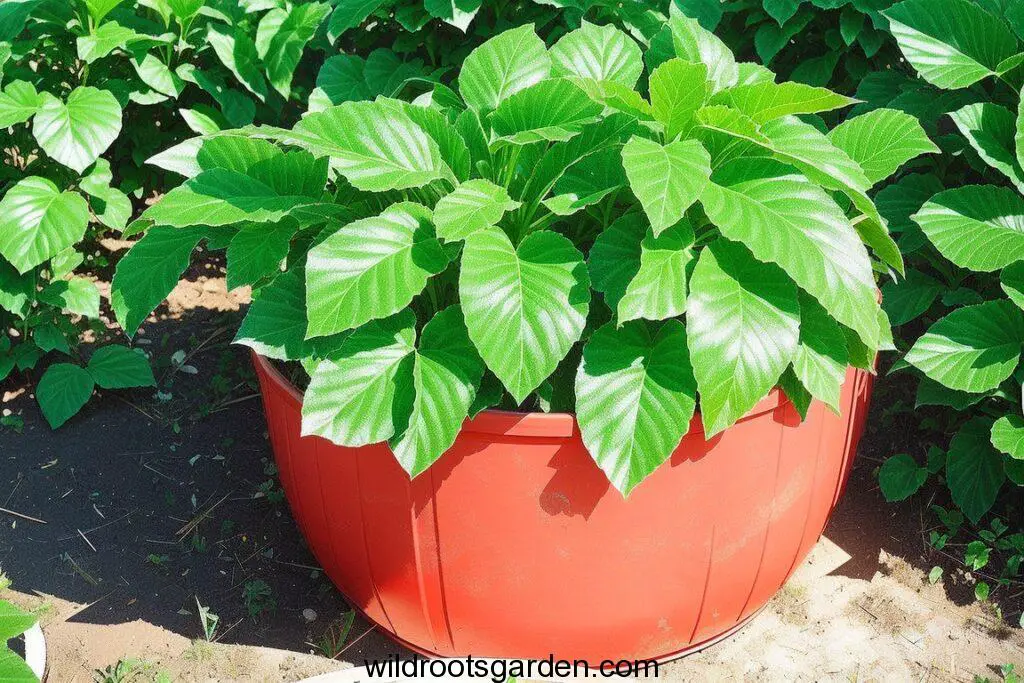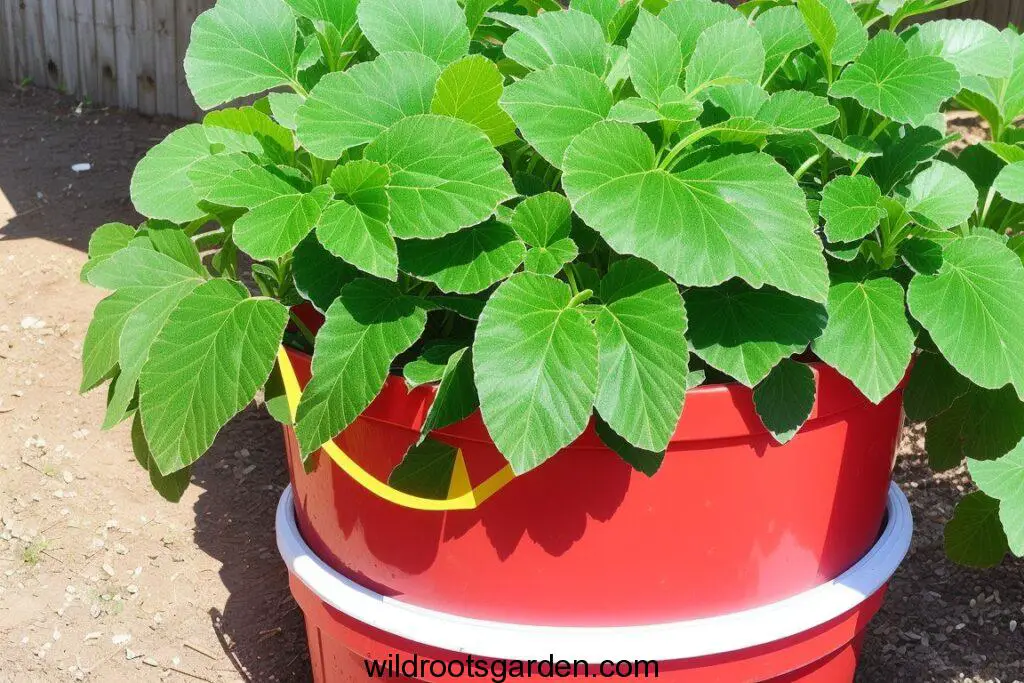Can I Grow Watermelon in a 5-Gallon Bucket? Attention all gardening enthusiasts and space-conscious growers! Ever dreamt of cultivating your own delectable watermelon right in the comfort of your small space? Get ready to unlock the secrets of container gardening and embark on an exciting journey of sweet success!
In this captivating blog, we unveil the possibilities of growing watermelons in 5-gallon buckets, defying conventional norms. Discover the carefully curated tips and tricks to choose the perfect compact varieties, provide the right support, and create a thriving environment for your watermelon to flourish.
Whether you’re a seasoned green thumb or a novice gardener, this blog promises to infuse your gardening journey with innovation and joy. So, step into the world of container gardening, embrace the potential of limited spaces, and delight in the satisfaction of harvesting your very own homegrown watermelons!
Are you ready to embrace this juicy adventure? Join us and experience the sweetness of success with your bountiful watermelon harvest! Happy gardening!

JUMP TO TOPIC
Benefits of Growing Watermelon in a 5-Gallon Bucket
Because of its adaptability and simplicity, container gardening has become extremely popular. Watermelon can be grown successfully in a 5-gallon bucket thanks to a number of benefits that make it a fantastic option for gardeners with limited space. The first benefit of using a portable container is that you can place the watermelon plant where it will receive the most sunlight and protection. The bucket may be easily moved to follow the sun throughout the day or brought inside during bad weather. A 5-gallon bucket’s modest size also makes it perfect for balconies, patios, and even small gardens. You can enjoy the thrill of homegrown watermelon in areas of all sizes by utilizing the power of container gardening.
Selecting the Right Watermelon Variety
The proper watermelon variety must be chosen while cultivating in containers. Choose compact or dwarf cultivars that were bred specifically for confined places. These types are perfect for container gardening because of their more controlled growth habits. Seek watermelon varieties recognized for their short maturation times and compact vines. “Sugar Baby,” “Golden Midget,” and “Bush Sugar Baby” are a few of the more popular options. These types offer tasty, juicy fruits that are ideal for eating on hot summer days and do not only flourish in containers.
Preparing the 5-Gallon Bucket
To provide a favorable environment for growth, it is crucial to carefully prepare the 5-gallon bucket before planting your watermelon. To begin, drill drainage holes in the bucket’s bottom to guarantee appropriate water drainage and avoid waterlogging, which can cause root rot. Try for four to six holes that are equally spaced apart and have a diameter of about half an inch. Once the drainage holes are ready, add some well-draining potting mix to the bucket. It works well to combine compost, peat moss, and perlite or vermiculite in an equal ratio. The watermelon plant benefits from this combination’s adequate aeration, moisture retention, and nutrient availability.

Planting Watermelon in the 5-Gallon Bucket
To plant watermelon in the 5-gallon bucket, follow these step-by-step instructions:
Fill the prepared bucket with the potting mix, leaving approximately two inches of space below the rim.
- Create a small depression in the center of the soil, about one inch deep.
- Sow two or three watermelon seeds in the depression, spacing them evenly.
- Gently cover the seeds with soil and lightly press down to ensure good seed-to-soil contact.
- Water the soil thoroughly but gently, avoiding excessive pressure that may displace the seeds.
- Place the bucket in a location that receives full sun, preferably for at least six to eight hours a day.
Caring for Watermelon in a 5-Gallon Bucket
As the watermelon seeds germinate and the seedlings appear, it is essential to provide them with the right care to guarantee good growth and a plentiful crop of fruit. These are some crucial care procedures:
Watering: Consistent watering is necessary for watermelon plants, especially in the hot summer months. Make sure the soil is continuously moist but not soggy. Water the plants thoroughly, making sure the water gets to the root zone. Straw or wood chips applied to the soil’s surface as a mulch can aid in soil temperature control and moisture retention.
Fertilizing: Watermelon plants require frequent fertilizer because they are heavy feeders. To supply vital nutrients, use organic compost or a balanced, slow-release fertilizer. Use fertilizer as directed on the packaging to avoid using too much and encourage the growth of foliage at the expense of fruit development.

Pruning: Regularly check the watermelon vines for any abnormal growth or suckers to encourage airflow and prevent crowding. In order to divert the plant’s resources toward fruit production, cut down any weak or damaged vines. Pruning also aids in regulating the plant’s size, which makes it easier to handle in the restricted area of a 5-gallon bucket.
Pest and Disease Management: Although container gardening might lessen insect and disease problems, it’s still important to exercise caution. Check the plant frequently for common pests like cucumber beetles, spider mites, or aphids. Use natural pest control techniques, or ask your neighborhood garden center for effective solutions. To stop fungus, make sure the air is properly circulated and avoid watering from above.
Supporting the Growing Watermelon
Giving support as your watermelon plant grows is crucial to avoiding rambling vines and potential fruit loss. You can choose to trellis the watermelon or give it support structures like stakes or cages, depending on the variety and personal choice. A solid structure can be trellised by attaching the vines to it, guiding them to grow higher, and fastening them with twine or soft ties. By keeping the watermelon from touching the ground and maximizing space use, the chance of rot or pest damage is decreased.
Harvesting and Enjoying Your Watermelon
The thrilling harvest brings the fun of growing watermelon in a 5-gallon bucket to a close. Examine your watermelon for the following indications to see if it’s ripe and ready to be picked:
- Check the color of the fruit’s skin, which should be deep green or the specific color characteristic of the variety you are growing.
- Observe the tendril nearest to the fruit; if it turns brown and begins to dry out, it’s a good indication that the watermelon is ripe.
- Tap the watermelon gently and listen for a hollow sound, which suggests ripeness.
When your watermelon is ready to be picked, trim the stem close to the fruit with a sharp knife or pair of garden shears. The watermelon should not be pulled or twisted since this could harm the plant and the fruit. Once it has been harvested, keep the watermelon in a cool, dry area or chill it for a nice treat.

Frequently Asked Questions (FAQs)
Q1: Can I grow watermelon in any type of 5-gallon bucket?
Yes, you can use any standard 5-gallon bucket for growing watermelon. Just make sure to prepare the bucket properly with drainage holes and use a suitable potting mix.
Q2: How many watermelon plants can I grow in a 5-gallon bucket?
It’s best to limit each 5-gallon bucket to one watermelon plant to ensure adequate space for root development and fruit production.
Q3: How long does it take for watermelons to grow in a 5-gallon bucket?
The time it takes for watermelons to grow in a 5-gallon bucket depends on the variety you choose. On average, it takes around 70-90 days from planting to harvest.
Q4: Can I reuse the same bucket for subsequent watermelon plantings?
Yes, you can reuse the same bucket for future watermelon plantings. Just ensure proper cleaning and sanitization between uses to prevent the spread of diseases.
Q5: Can I grow other vegetables or fruits in a 5-gallon bucket?
Absolutely! A 5-gallon bucket is a versatile container that can be used to grow various vegetables and fruits, including tomatoes, peppers, herbs, and even smaller root crops like radishes or carrots.
We hope that after reading about growing watermelons in 5-gallon buckets, you are motivated to start this fascinating gardening project. No area is too tiny for the charm of homemade sweetness, so keep that in mind!
You may watch the marvel of small watermelon seedlings growing into juicy treats right on your balcony or patio with the appropriate information and a dash of dedication. Enjoy caring for and seeing your watermelons flourish.
So, gather your gardening tools, select your favorite compact watermelon variety, and start planting! Soon enough, you’ll be rewarded with the mouthwatering taste of your very own homegrown watermelons.
Get ready to celebrate the sweet rewards of watermelon container gardening. Happy growing and even happier harvesting!


